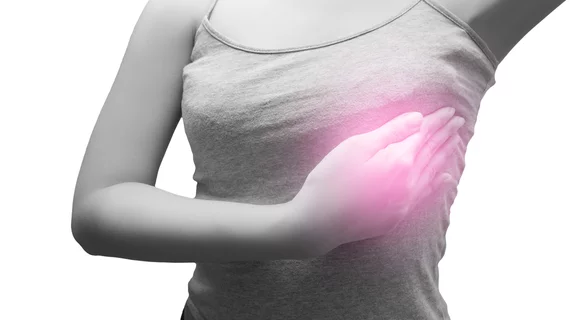Fast MRI an ‘effective and feasible’ option for detecting cancer in dense breasts
Abbreviated magnetic resonance imaging is an “effective and feasible” option for detecting cancer in dense breast tissue, with reimbursement also starting to follow suit, Penn Medicine researchers reported this week.
Scientists from the Philadelphia-based institution recently explored the use of such “fast MRI” on nearly 500 women who fall into this category. AB-MR, as it’s called for short, detected 13 additional cancer cases that digital breast tomosynthesis missed on the first go, the university announced on Tuesday.
With Pennsylvania and Missouri recently passing legislation stipulating that insurers must cover such supplemental screenings, the future may be bright for these examinations, researchers noted.
"Mammogram is the best tool we have to detect breast cancer, but it's not perfect. In women with fatty tissue, we can very easily detect cancer. But in women with very dense breasts, the sensitivity can be low as 30 percent," Susan Weinstein, MD, an associate professor of Radiology at Penn, said in an Oct. 27 announcement. "We need to start thinking about how to better screen women with dense breasts, and AB-MR is an effective and feasible option."
For their retrospective study, Weinstein et al. analyzed data from 475 women imaged between 2016 and 2019. Those included had dense breasts, along with a negative or benign DBT exam in the past 11 months. All told, Perelman School of Medicine researchers calculated that AB-MR detected about 27 cancers per 1,000 women compared to four or five for DBT.
While breast MRI has faced hurdles in the past due to cost and limited availability, Weinstein and colleagues noted that AB-MR can bust these barriers. It requires only three sets of imaging, compared to the typical 16. Penn claims it is one of only a few systems in the nation to offer fast MRI as a supplemental breast screening tool.
“As even more data comes out, there is going to be a lot of debate about how we should screen women with dense breasts, and how we should pay for it. It is important to keep in mind that, although we are detecting more cancers, we don't know the long-term benefits, such as survival rates," Weinstein said in the announcement. "With further research, we will have more information in the future."
Their work was recently highlighted in the Journal of Clinical Oncology. Read more here.

